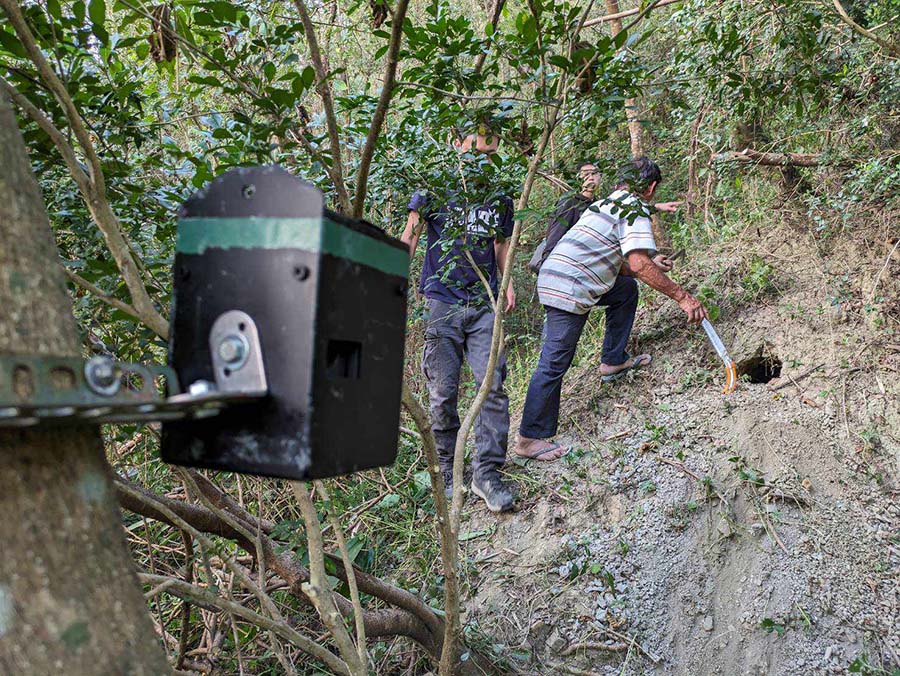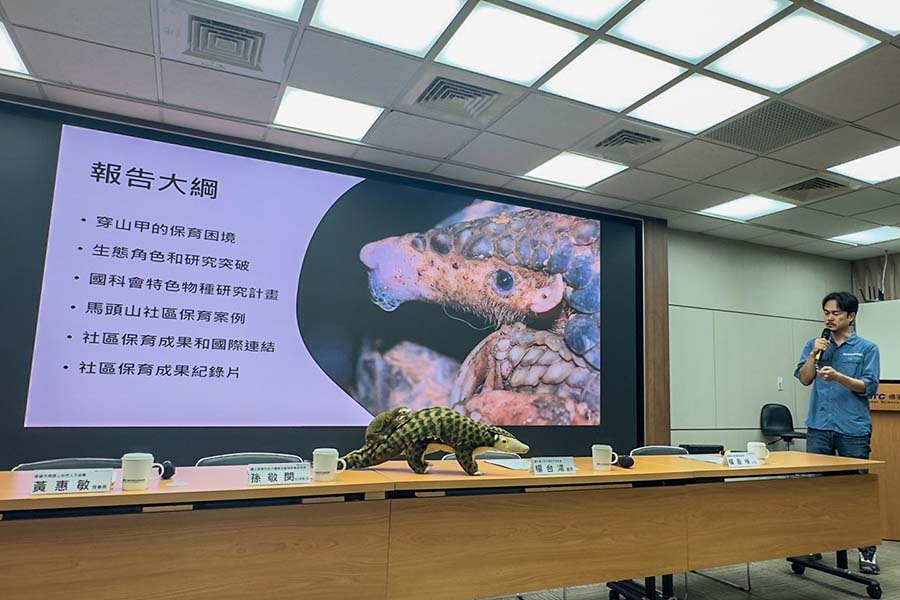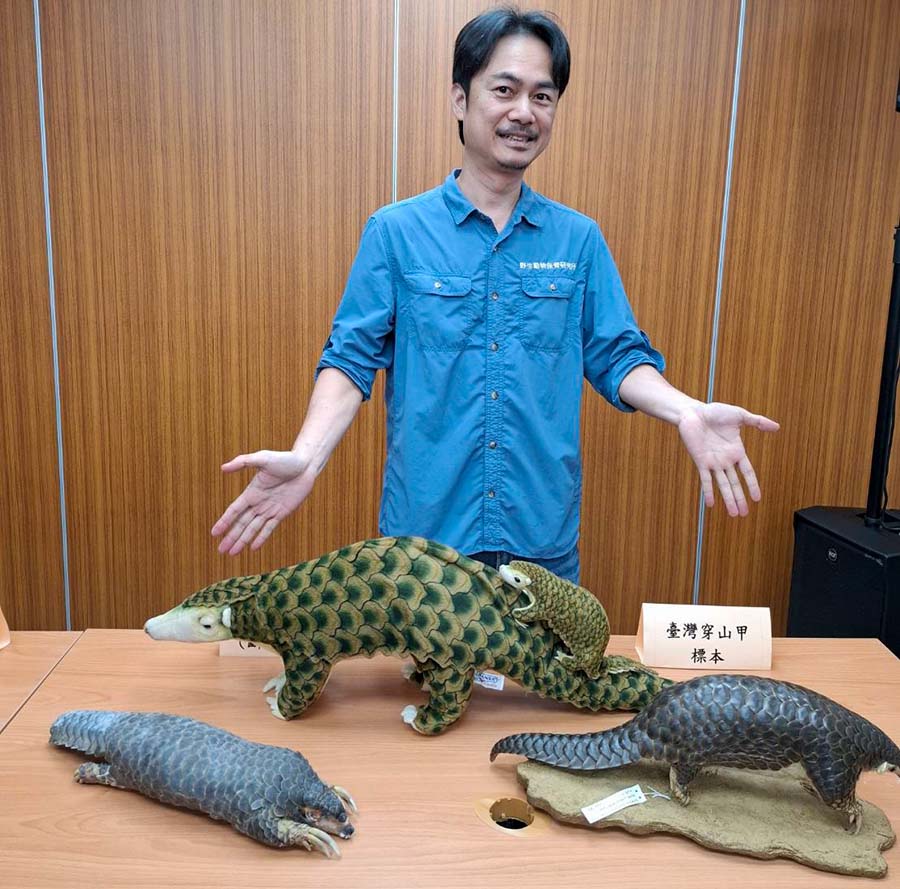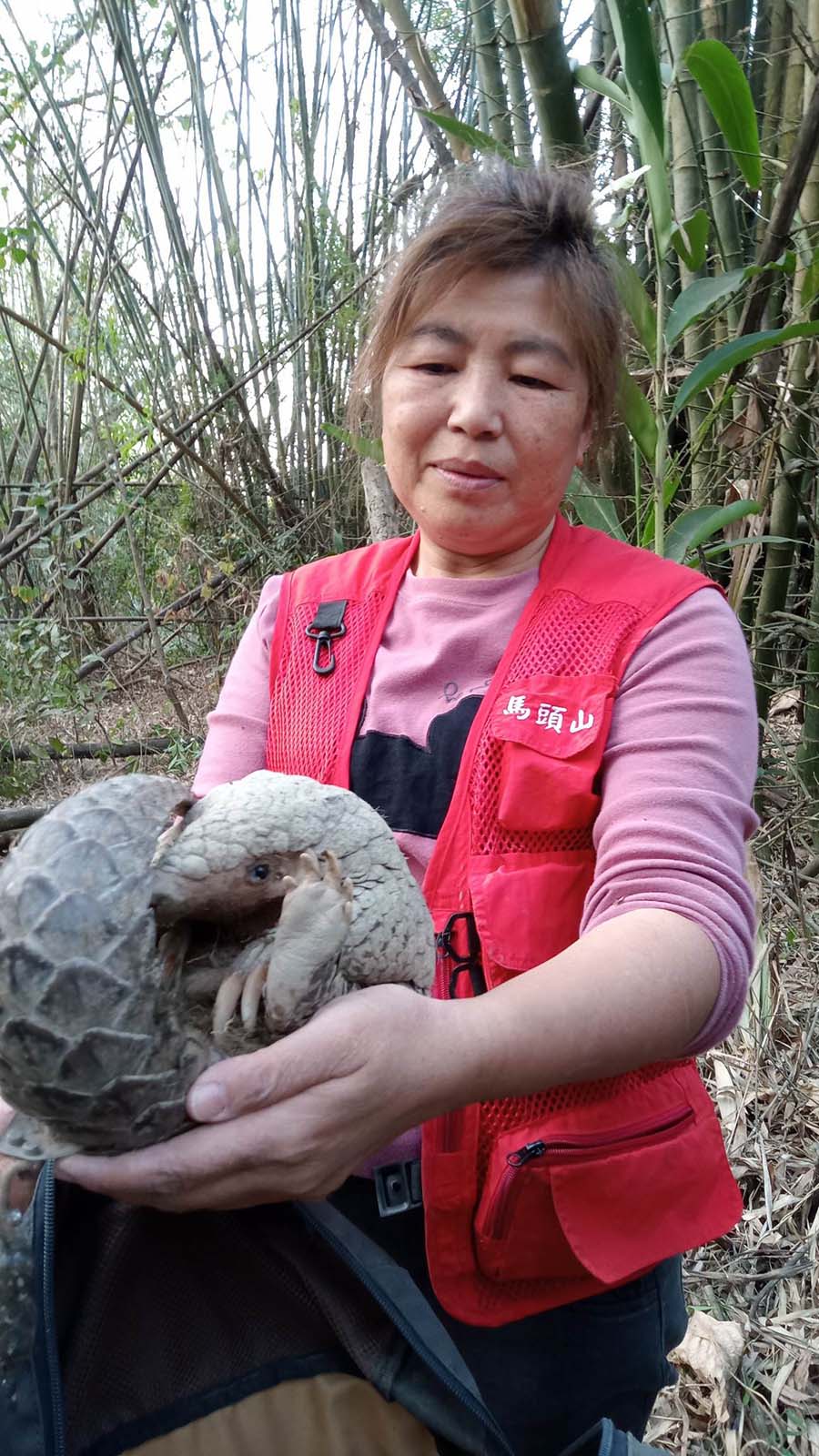Factors such as poaching and demand for traditional Chinese medicine have caused global pangolin populations to declined rapidly or even disappeared in some parts of the world. However, thanks to conservation efforts in Taiwan in recent years, its local pangolin populations have become much more stable. Nevertheless, since pangolin habitats are mostly distributed in low-lying mountain areas, they still face many threats to survival, including intrusion by stray dogs, habitat degradation, or traps set for other animals. Therefore, with the support of the National Science and Technology Council (NSTC) and the Ministry of Agriculture (MOA), a research team headed up by Assistant Professor Ching-Min Sun of the NPUST Institute of Wildlife Conservation has been deeply engaged in research on the pangolin’s unique way of life so that they can provide more specific conservation recommendations to concerned parties. Through their work, a radio tracking network and community reporting mechanism has been established, and the team has been able to gain valuable insight on the pangolins’ range of activities, population size and reproductive status. Also, for the very first time, the team has been able to evaluate the pangolin’s ability to raise offspring after losing a tail and observe the challenges it faces in the process.
The Taiwan pangolin (Manis pentadactyla pentadactyla) is a rare and precious subspecies of pangolin which is endemic to Taiwan. According to statistics from the Ministry of Agriculture’s Biodiversity Research Institute, over the past decade more than 70% of pangolin injuries were caused by dog attacks. These attacks often cause broken tails which make it impossible for the pangolin to carry their pups—thus affecting the success rate of the rearing process. With the results of Sun’s recent study, the field of pangolin conservation now as new and important reference to consider. Additionally, the data collected by Sun’s team has also helped develop a clearer picture of the symbiotic relationship of pangolins, termites, and various vegetation. The researchers intend to use their results to establish local pangolin conservation models and create ecological industries. They also hope to promote their model throughout Taiwan and work with various partners to protect Taiwan’s fragile shallow-mountain ecosystems and its rich biodiversity.









